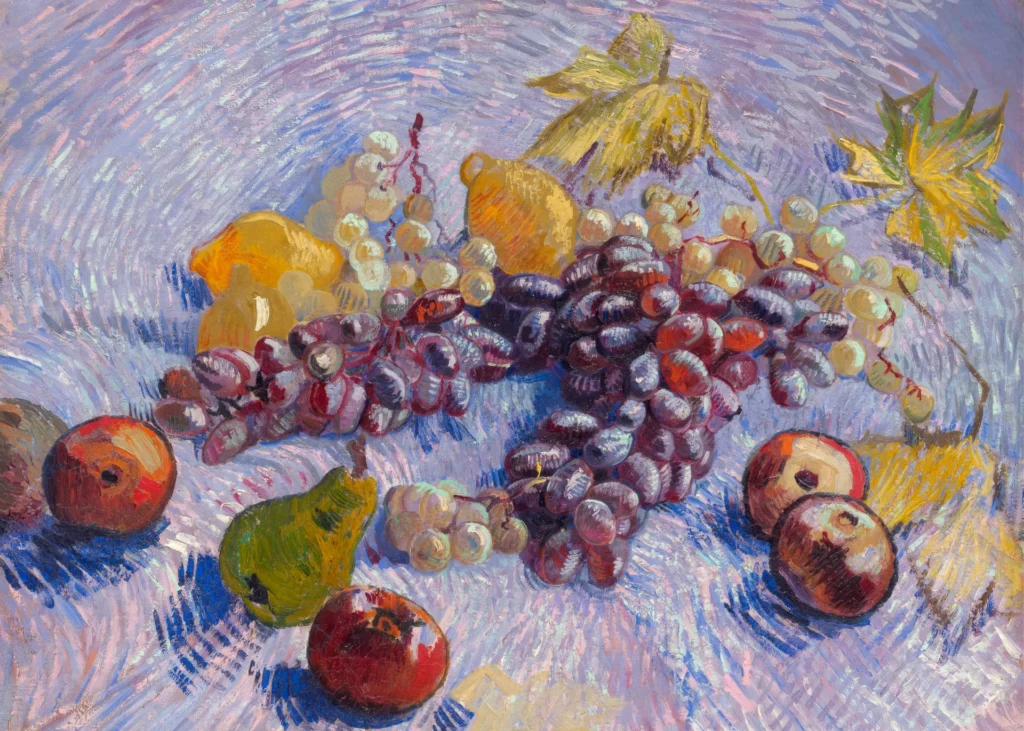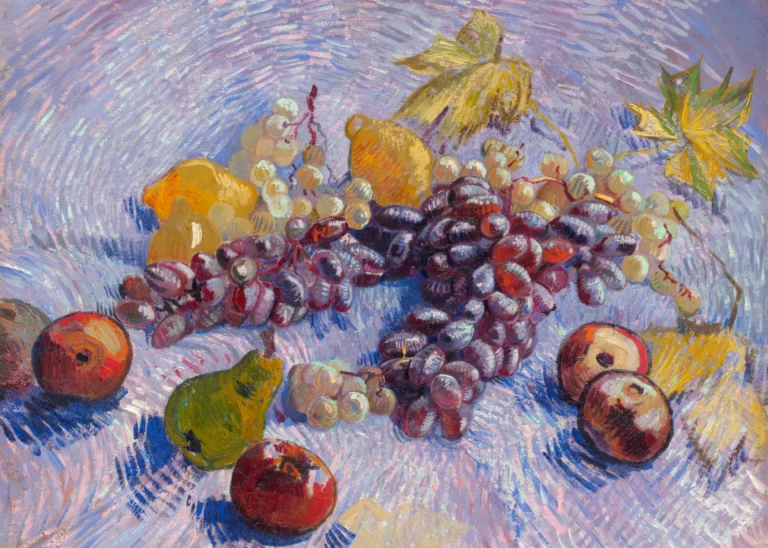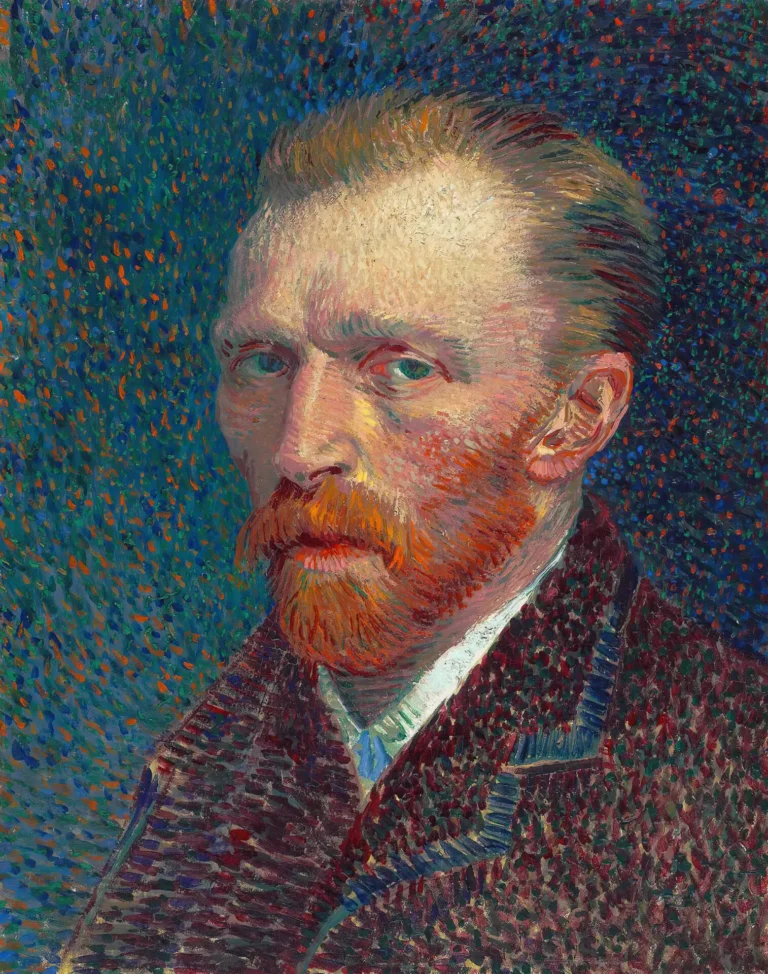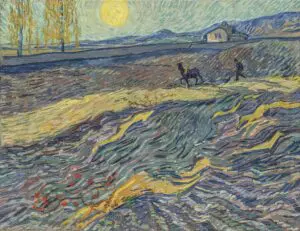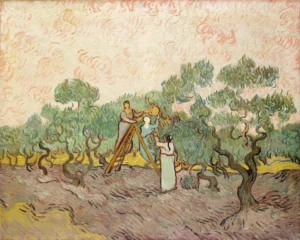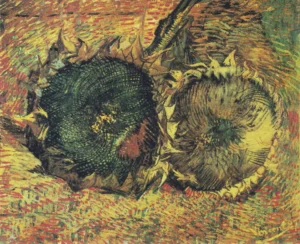Grapes, Lemons, Pears, And Apples (1887)
Created in the fall of 1887, Grapes, Lemons, Pears, and Apples is a striking still life by Vincent van Gogh that reveals his innovative approach to color and form. During this phase in Paris, he was influenced by contemporary French artists and embraced a new palette, utilizing vibrant hues and bold brushwork. This piece is distinctive for its energetic patterns and complementary color contrasts, showcasing Van Gogh's evolution as a master colorist. It is currently housed at the Art Institute of Chicago, representing a pivotal moment in his artistic journey.
Fall of 1887
About the Artwork
Did You Know
Liked what you see? Add it to your collection.
Enjoyed reading? Share it.
... continued
Creation and Context
This painting is part of a series of still lifes featuring seasonal fruit that Van Gogh produced during this period. It reflects his experimentation with color and technique after being influenced by modern French artists in Paris.
Artistic Techniques
Van Gogh simplified his palette and employed more vibrant colors in this work. He used a thicker, broader paint application and explored the use of complementary colors such as yellow and purple, blue and orange, and red and green to achieve chromatic intensity. The painting also features a pulsating pattern of brushstrokes that defines the tablecloth and creates a dynamic effect around the fruit.
Exhibition and Reception
The painting was likely included in a group exhibition of young avant-garde artists that Van Gogh organized at a local restaurant in November-December 1887. His friend, the painter Emile Bernard, described these works as “violent still lifes.”
Current Location and Details
The painting is currently on view at the Art Institute of Chicago. It is oil on canvas, measuring 46.5 × 55.2 cm (18 1/4 × 21 3/4 in.), with the framed dimensions being 57.8 × 66.7 × 5.1 cm (22 3/4 × 26 1/4 × 2 in.). The painting was a gift from Kate L. Brewster.
Significance
This work showcases Van Gogh's development as a colorist and his innovative use of color and brushwork, which were significant aspects of his artistic style during his time in Paris.




